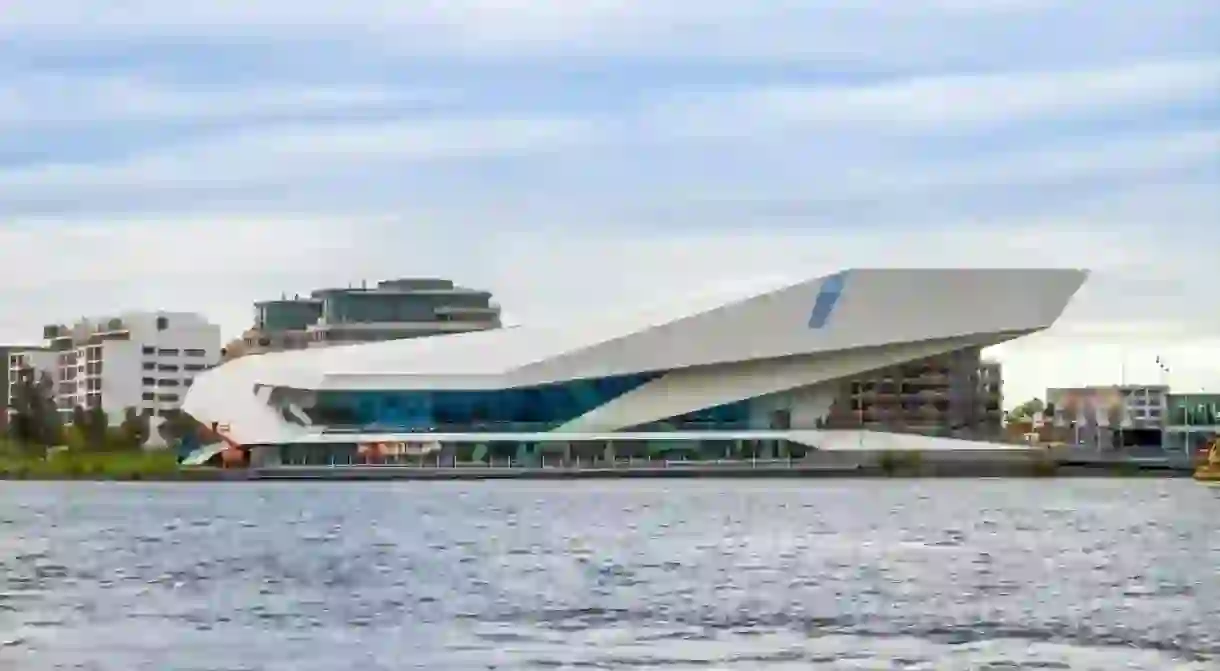Amsterdam's Intriguing Modern Architecture

While Amsterdam’s urban landscape is generally associated with medieval and Dutch Golden Age architecture, the city also features numerous examples of innovative, modern structural design. These intriguing buildings veer away from conventional forms and architectural gestures, creating a stunning, modern cityscape that is almost unrivalled in the Netherlands or Northern Europe.
Crane Hotel Faralda, Amsterdam
Boutique Hotel, Hotel

Until relatively recently, Amsterdam’s NDSM Wharf was mainly associated with shipping and industry, activities that led to the construction of several massive buildings. Today, many of these structures have been repurposed into cultural properties and Crane Hotel Faralda is among their most illustrious. This luxurious hotel is housed inside a former crane that towers above NDSM Wharf and contains three exclusive suites that overlook central Amsterdam.
De Fietsflat
Building

In 2001, Amsterdam’s municipality constructed a multi-storey bicycle storage facility on a canal just south of Centraal Station. This floating platform was originally created as a temporary space for bicycles that would free up room around the station during a large-scale renovation project. After completing these plans, the municipality decided to leave the bicycle facility intact and it is now known as de Fietsflat (the Bicycle Apartment).
NEMO Science Museum
Museum

EYE Film Institute
Building, Cinema, Museum

Amsterdam’s northern skyline was completely altered in 2012 after the completion of the EYE Film Institute. This monumental structure was built in order to contain the national film archives, as well as four modern cinemas, an exhibition space and a restaurant. Its sloping spires and peculiar geometrical patterns create the illusion of movement, with each of its walls folding into the next.
Scheepvaarthuis
Hotel

Scheepvaarthuis is generally considered to be the first complete example of Amsterdamse School architecture and embodies the dynamic, expressive style that has become synonymous with the movement’s principal endeavours. Although it was originally owned by several Dutch shipping companies, it was purchased by a hotelier group in 1998 and converted into a five-star hotel called Grand Hotel Amrâth Amsterdam.
Muziekgebouw aan ‘t IJ
Concert Hall

REM Eiland Restaurant
Restaurant, Bar, European, Northern European

This floating restaurant was actually built in Ireland and then towed to the North Sea. In the 1960s, a Dutch pirate radio station broadcasted from the platform but was eventually shut down by the authorities. Later on, the platform was moved to Amsterdam’s Houthavens, where it was turned into a popular restaurant, which is renowned for its wonderful views of the river IJ.
Stedelijk Museum Amsterdam
Museum

Although large parts of the Stedelijk were created during the 19th century, in 2012, a new wing was added to the museum that is colloquially known as the ‘bathtub’. This ultra-modern structure resembles a deep, elongated bowl with an enormous metallic top that juts over its sides. The new wing was criticized during its early years, but eventually became an iconic part of Amsterdam’s urban landscape.













